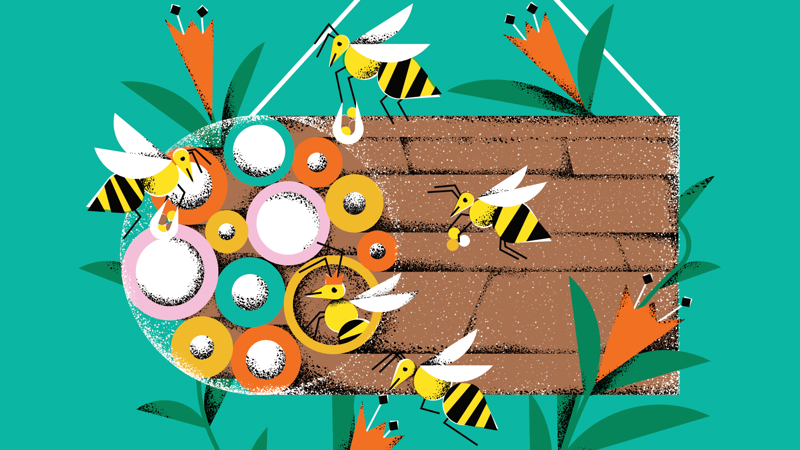
Build a bee hotel
You’ll need
- Scissors
- String
- Paper drinking straws
- Bamboo canes
- Natural materials (for example, leaves, twigs, feathers)
- Paint brushes
- Empty, clean tin can
- Small saw and protective equipment (optional)
- Newspaper
- Cardboard
- Sticky tape
- Leaves and natural materials
- Acrylic paint
Bees pollinate plants. This means that they move pollen from one plant to another plant of the same type, which allows plants to make seeds and fruit.
Humans eat the fruit or use the seeds to grow more plants to harvest from. Bees pollinate fruits and vegetables, such as broccoli, apples, and tomatoes.
Bees also pollinate plants that we use to feed animals that we eat or keep because they produce food. They help to make some of our clothes by pollinating cotton plants, too.
Bees help pollinate many of the trees and flowers that provide habitats, which are places to live, for other wildlife.
However, bees are at risk in trouble for a number of reasons, such as the use of pesticides and there being fewer places in nature for them to live than there used to be. Some species have already gone extinct and others are at risk.
Different species of bees are better at pollinating different types of plants, so it’s important to have lots of different species of bees.
If we didn’t have bees, farmers would have to spend lots of money to find new ways to pollinate crops and everything would become more expensive. It’s thought that without bees, it would cost UK farmers £1.8 billion a year to pollinate our crops. Our diets could also become less varied and less nutritious, which could impact our health.
It’s really important that bees have safe spaces to nest and hibernate as well as enough bee-friendly flowers to give them the food they need.
Before you begin
- Use the safety checklist to help you plan and risk assess your activity. Take a look at our guidance to help you carry out your risk assessment, including examples.
- Make sure all young people and adults involved in the activity know how to take part safely.
- Make sure you’ll have enough adult helpers. You may need some parents and carers to help if you’re short on helpers.
Planning this activity
- Ask everyone to collect a tin can, clean it, and bring them in. You’ll need enough for everyone to have one each.
- If you don’t have any paper drinking straws, you could roll up pieces of scrap paper or newspaper.
- Set up a space to create your bee hotels, this activity could create a bit of mess so think about going outside or putting something in the floor of your meeting place to help make cleaning up easier.
Learn about the bees
- Gather everyone together in a circle, and explain you’ll be learning about bees and making a bee hotel.
- Ask everyone if they know what food bees produce. Hopefully people will say honey – but did they know that bees have a big role in producing a lot of the food we eat? Why are they important for people? What do they do for biodiversity? Think about the variety of plants and animals in a certain space.
- Now, ask people what you could do to help to protect bees. We can give safe spaces to shelter, such as these simple bee hotels, and plant wildflowers that are bee-friendly.
Make a bee hotel
- Give everybody a clean, dry tin can.
- Everyone should tie a long piece of string around the bottom of the can, making sure there’s enough string left over to tie it to a tree or branch.
- Everyone should roll up pieces of cardboard or newspaper into tubes, then tape them to hold the tube in place. Make sure that they’re hollow, with open ends for bees to burrow in.
- Ask everyone to gather enough bamboo canes, rolled up card or newspaper tube, and straws to fill their tin can.
- Use the scissors to cut the straws and newspaper or card tubes, so that they are nearly the same length as their tin can. They should make them a few centimetres shorter, so they don’t get wet.
- If you need to cut the bamboo canes, an adult should use a saw to cut them down to size.
- Next, use a piece of cardboard and loosely roll it up, then place in the tin can, so it touches the edges. This will help to keep everything in place.
- Ask everyone to push their canes, rolled up card or newspaper tube and straws into the tin can.
- When they’re finished, they should add smaller twigs and stems in the gaps to make sure it’s tightly packed.
- If they want to, people could paint and decorate the outside of the can using acrylic paint. Why not paint it to look like a bee?
Set up your hotel
- Gather everyone back together and ask people where they think they might put their bee hotels. They should go in a sunny spot that’s at least 1m off the ground. It’s best to choose somewhere that’s sheltered from the rain.
- People could think about outdoor spaces at home and places they visit. Some meeting spaces may have outside space. There may be locally managed green spaces, such as city farms and allotments.
- Explain to everyone that it’s best to move the bee hotel in autumn and winter – they should go into a dry, unheated space, such as a shed.
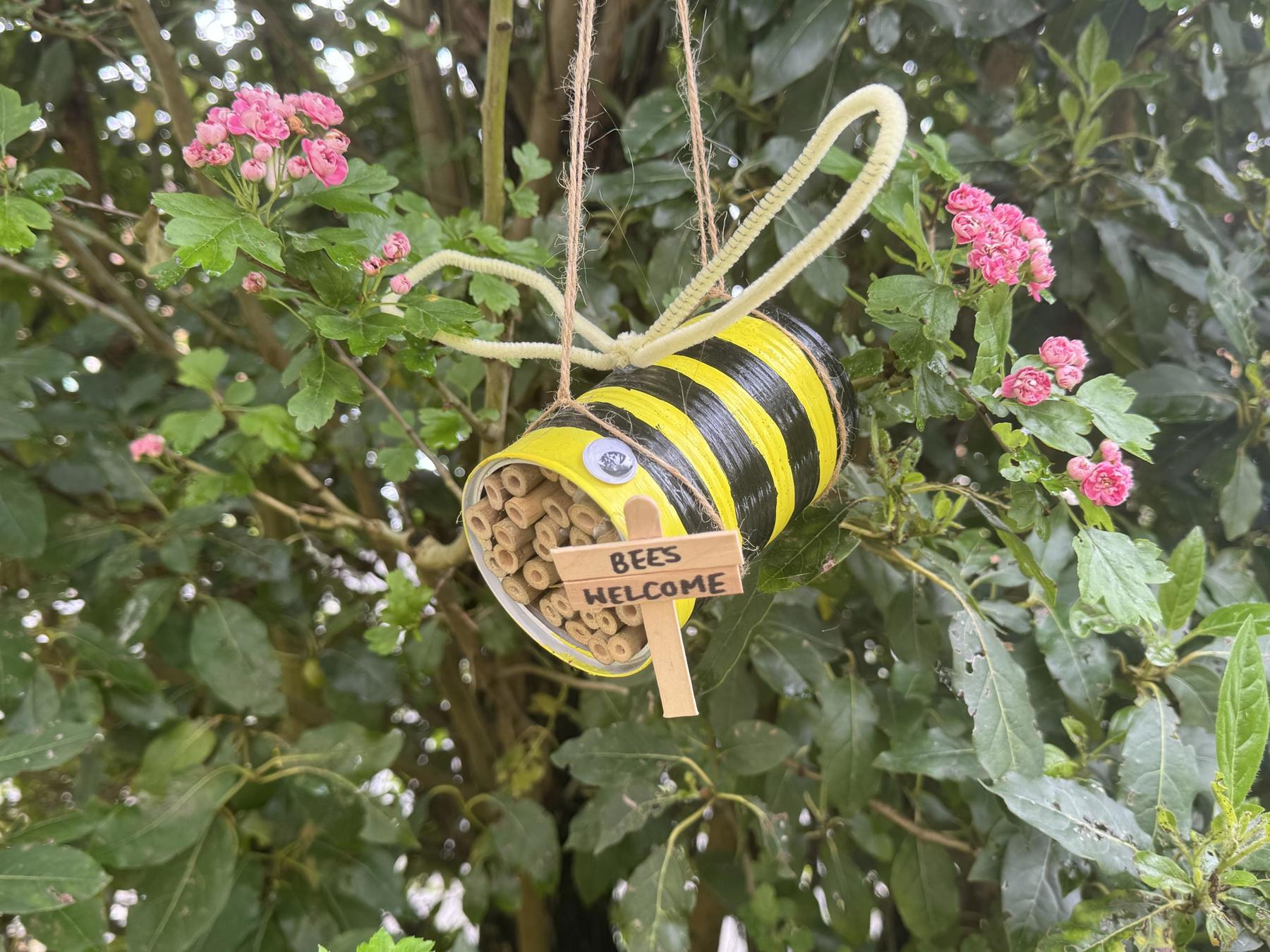
Reflection
What did people learn about bees in this activity? Was anything surprising? People could think about the jobs bees do and the reasons they’re in trouble at the moment.
How do people feel about bees? Perhaps some people feel worried about the bees, frustrated that not enough is being done, or relieved they’ve taken action to help.
Safety
All activities must be safely managed. You must complete a thorough risk assessment and take appropriate steps to reduce risk. Use the safety checklist to help you plan and risk assess your activity. Always get approval for the activity, and have suitable supervision and an InTouch process.
- Scissors
Supervise young people appropriately when they’re using scissors. Store all sharp objects securely, out of the reach of young people.
- Sharp objects
Teach young people how to use sharp objects safely. Supervise them appropriately throughout. Store all sharp objects securely, out of the reach of young people.
- Rubbish and recycling
All items should be clean and suitable for this activity.
- Outdoor activities
You must have permission to use the location. Always check the weather forecast, and inform parents and carers of any change in venue.
- Gardening and nature
Everyone must wash their hands after the activity has finished. Wear gloves if needed. Explain how to safely use equipment and set clear boundaries so everyone knows what’s allowed.
- Everyone could help to collect the natural materials needed for this activity.
Adults can take a step back or get more involved depending on how people are getting on. Some people may need some extra support with the scissors or saw, for example. People could also work in pairs and help each other.
All Scout activities should be inclusive and accessible.
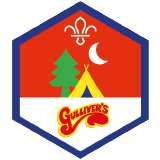
Beavers My Outdoors Challenge Award

Cubs Environmental Conservation Activity Badge

Cubs Naturalist Activity Badge

Cubs Our World Challenge Award

Scouts World Challenge Award

Community Impact Stage 1

Community Impact Stage 2

Community Impact Stage 3

Community Impact Stage 4
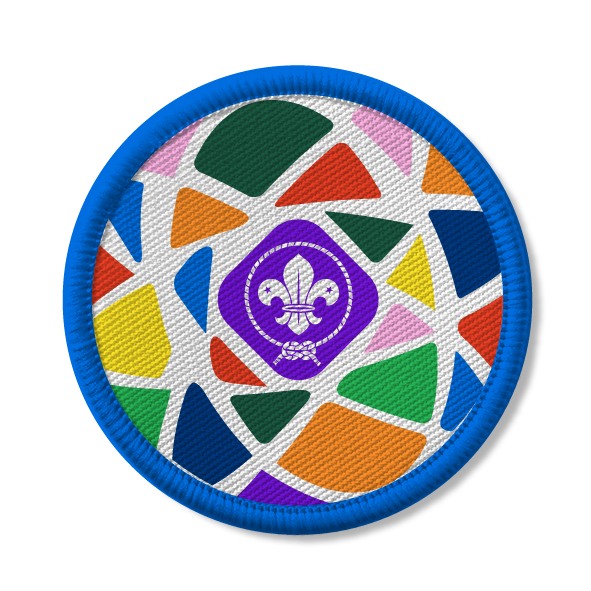
Earth Tribe Award
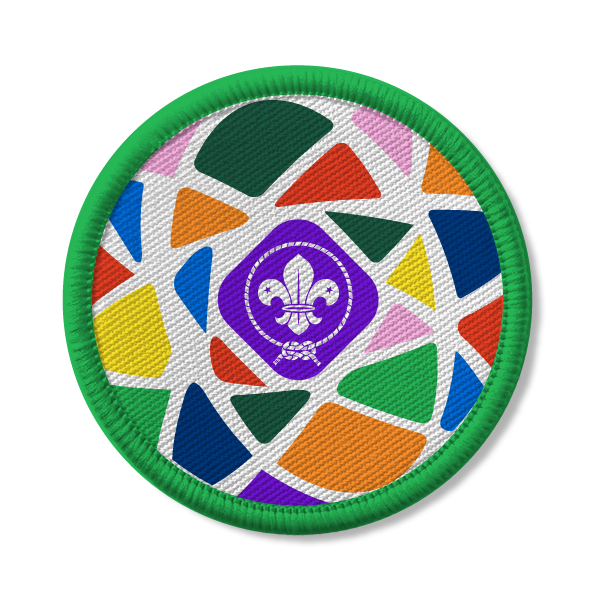
Earth Tribe Award
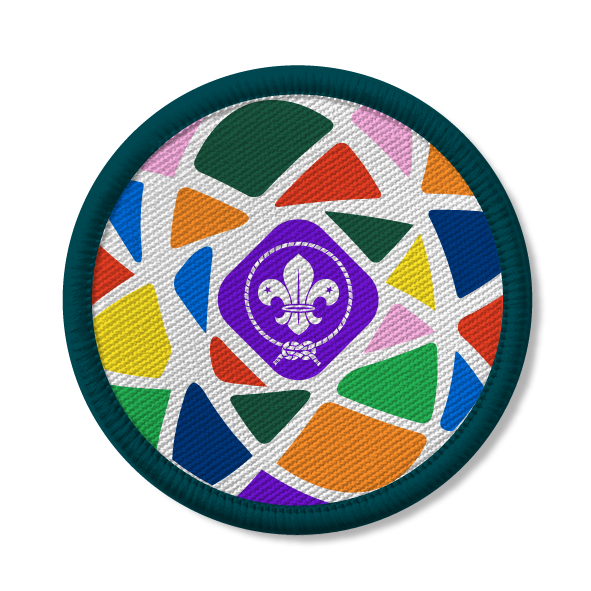
Earth Tribe Award
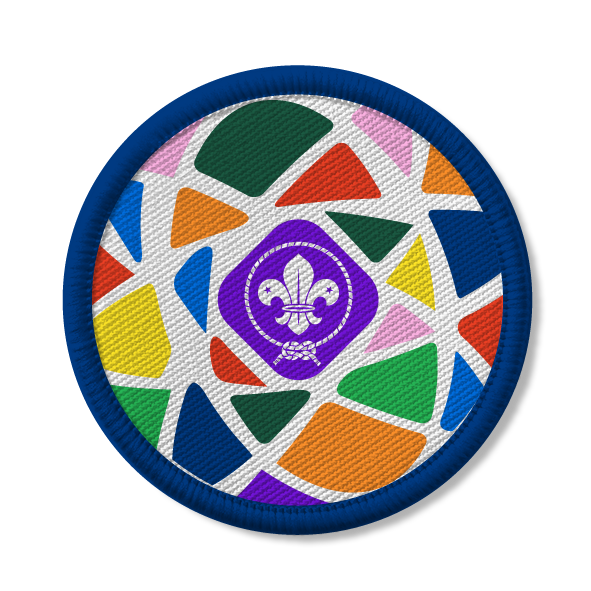
Earth Tribe Award
- Watch your bee hotel, and see if you can spot any bees checking in or checking out. Can you identify them? This bee identification guide from Friends of the Earth might come in handy.
- Everyone could find out about different types of bees. Can anyone find out what people mean when they talk about ‘solitary bees’? How many species of bee are there in the UK?
Invite everyone to share their ideas on how else they could support bees. What else do they want to do to protect biodiversity?